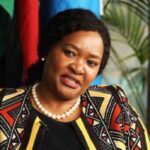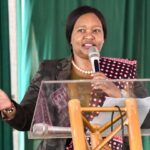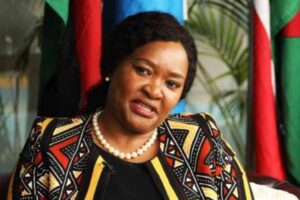[ad_1]
The yard, which was rehabilitated by Kenya Defence Forces, is part of the Lake Transport revival plan as Kenya aims to reposition its military to be a catalyst for industrialisation.
The President then handed over tools of operations to KSL Managing Director Brig Paul Otieno namely; flag, company seal, company certificate and the certificate of incorporation.
Uhuru was then seen onboard the ship as journalists took pictures of the ship and the leaders that were present.
The revitalisation of the port, which has been dormant since early 2000, started in 2019, a year after the truce between Uhuru and ODM party leader Raila.
The aim was to open up water transport, open business opportunities and connect Kenya to the Eastern Africa counties.
Led by the Kenya Navy, the works began with clearing the notorious hyacinth and refurbishment of the wagon ferry, the MV Uhuru, which had stalled for 15 years.
“KDF was given the task, especially the Kenya Navy. The estimated cost [of refurbishing the ferry) was about Sh1 billion but we spent Sh200 million. Initially KR wanted Sh2 billion for a new ferry,” Lieutenant Colonel Sokobe, a naval officer in charge of the works, told the Star.
The MV Uhuru, which has a carrying capacity of 22 wagons, ferries about two million litres of fuel per trip. Since the completion of its refurbishment three months ago, it has ferried 50 million litres of fuel to Jinja in Uganda.
From Jinja, the commodity is ferried by road to various parts of the region, including South Sudan and DR Congo. “If you are going to carry two million litres by road, you will require too many trucks, more than 50 trucks. You look at the pollution they cause and safety issues,” Sokobe said.
It takes about 12 hours for a trip to Jinja, he said, adding that the refurbished ferry has employed 30 people, including seven artisans and 23 crew.
Currently, dredging has increased the depth of the water to allow large and heavy passenger and cargo ships to dock.
[ad_2]
Source link
















